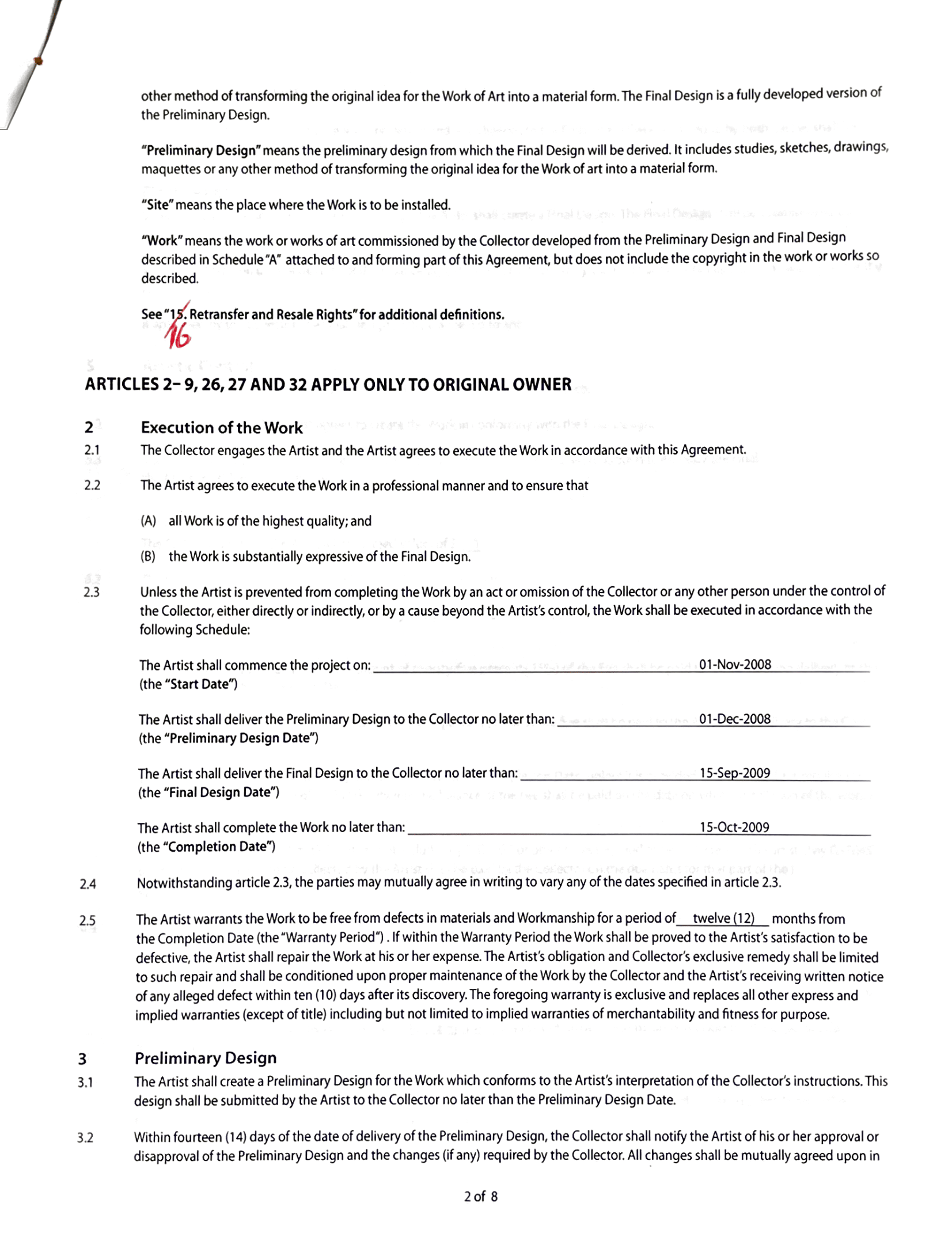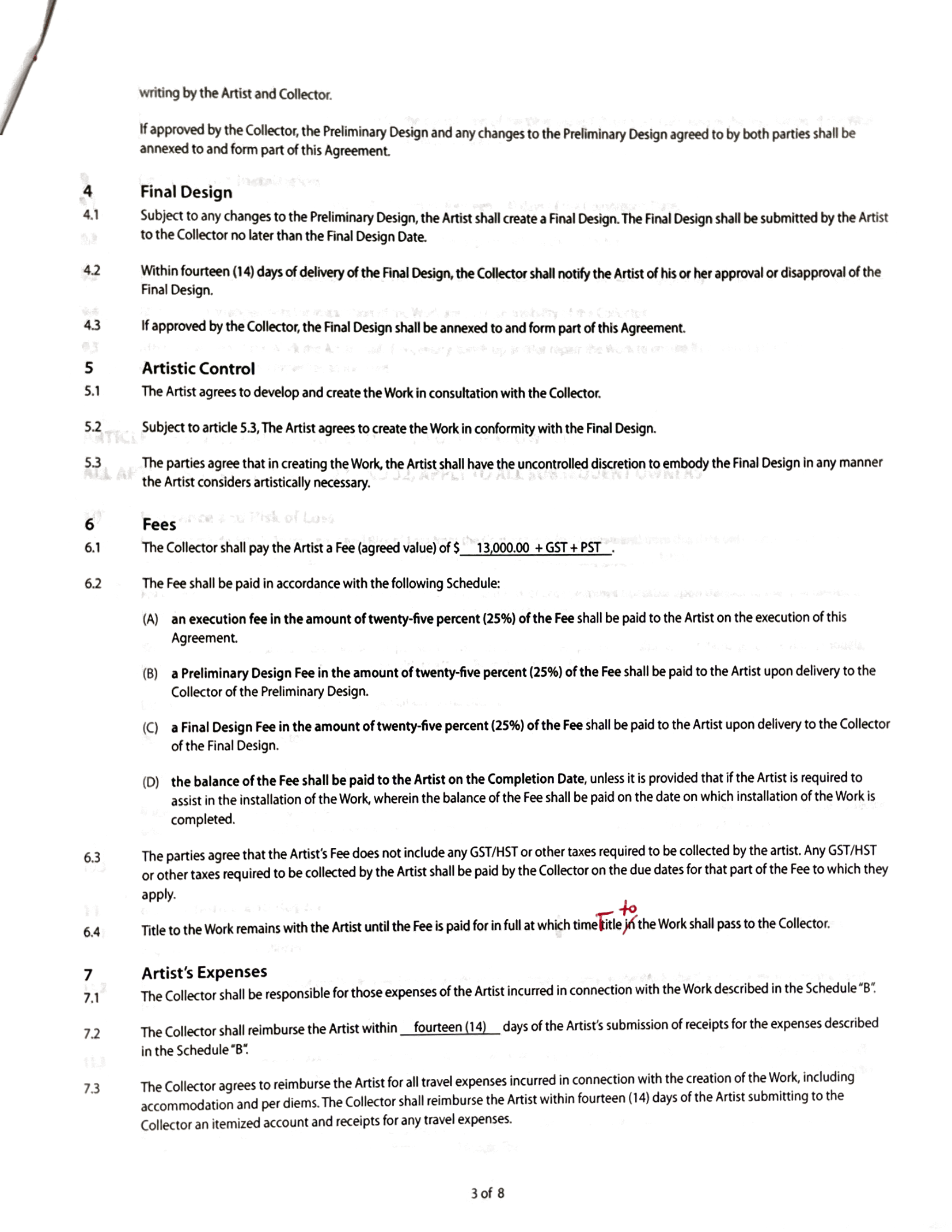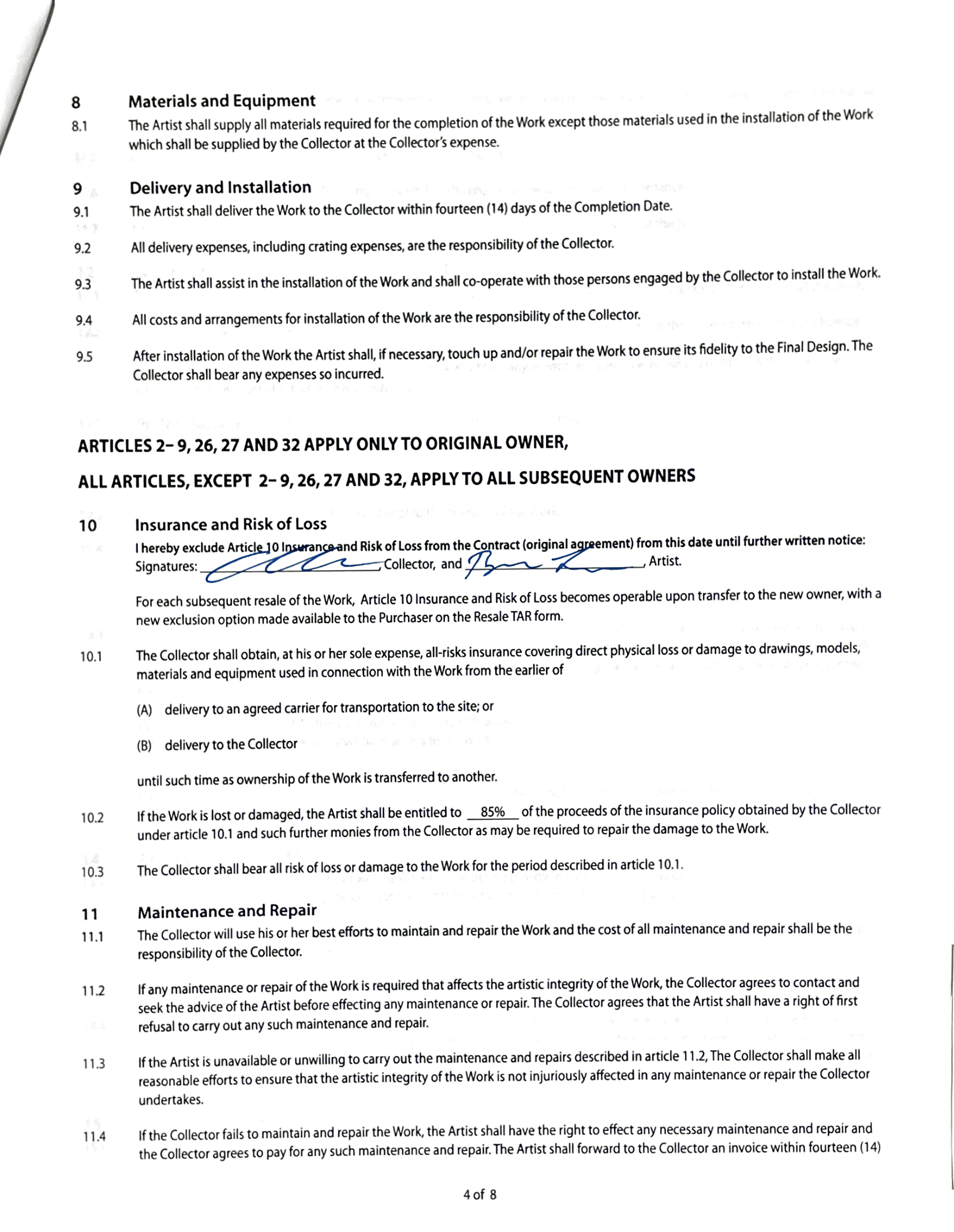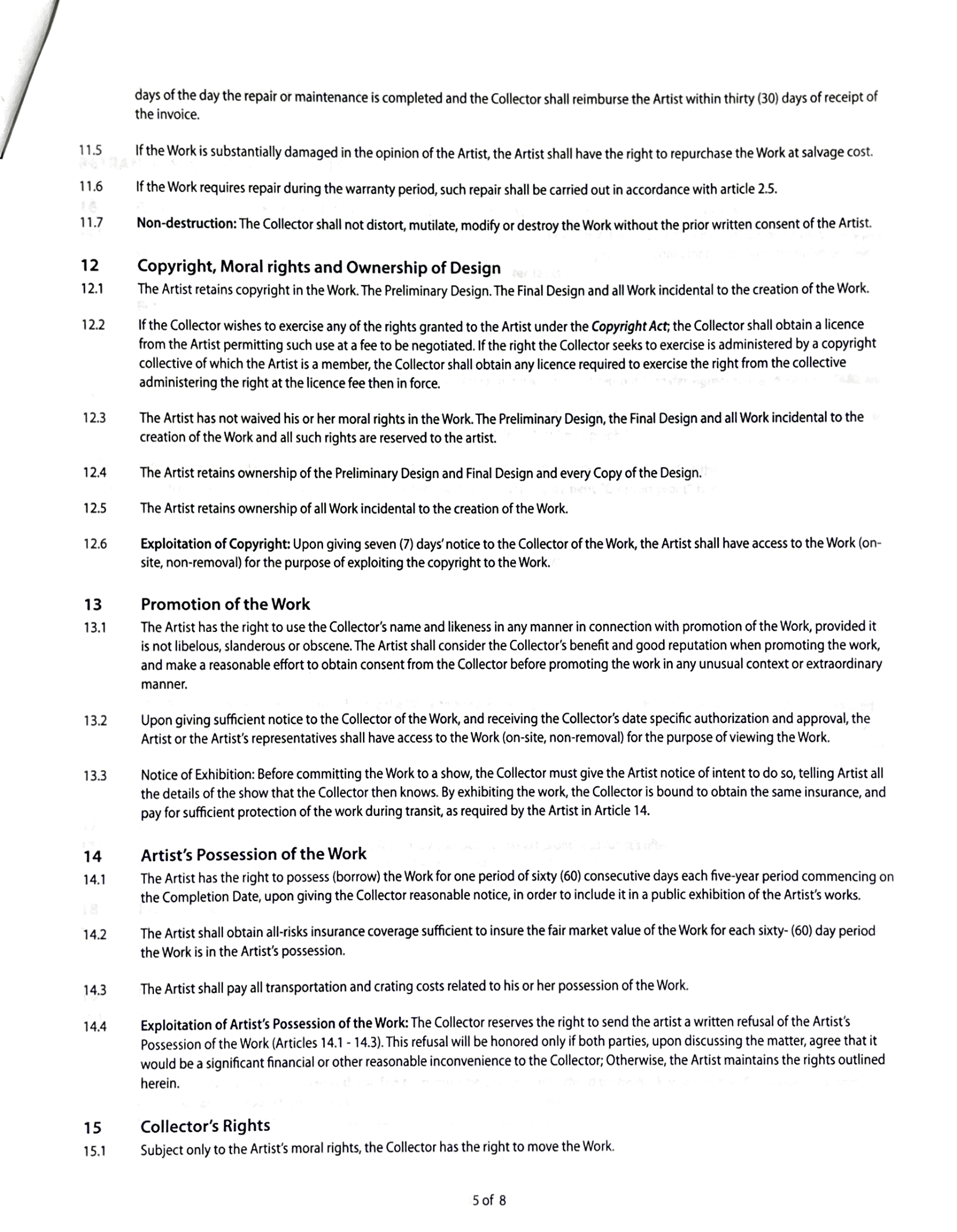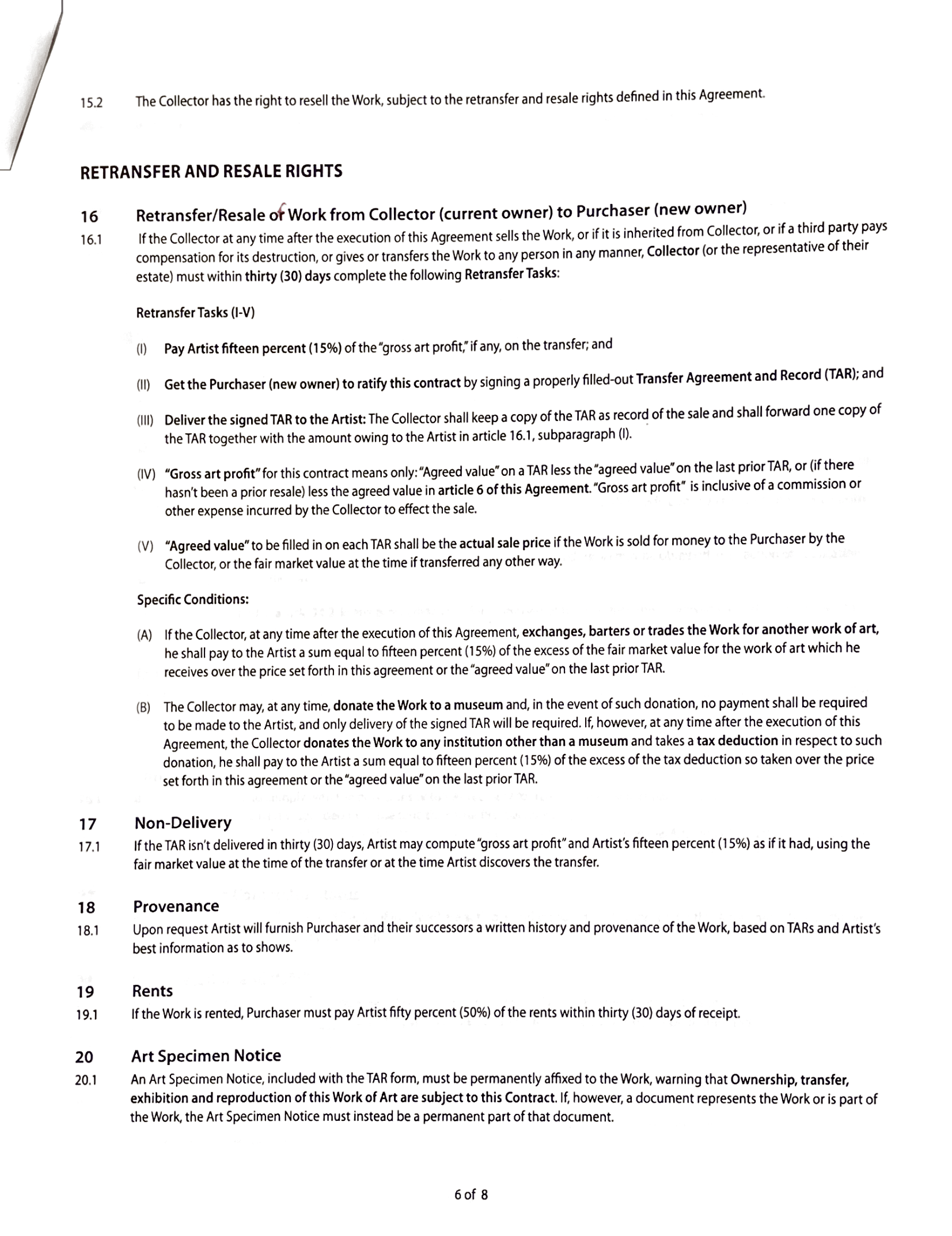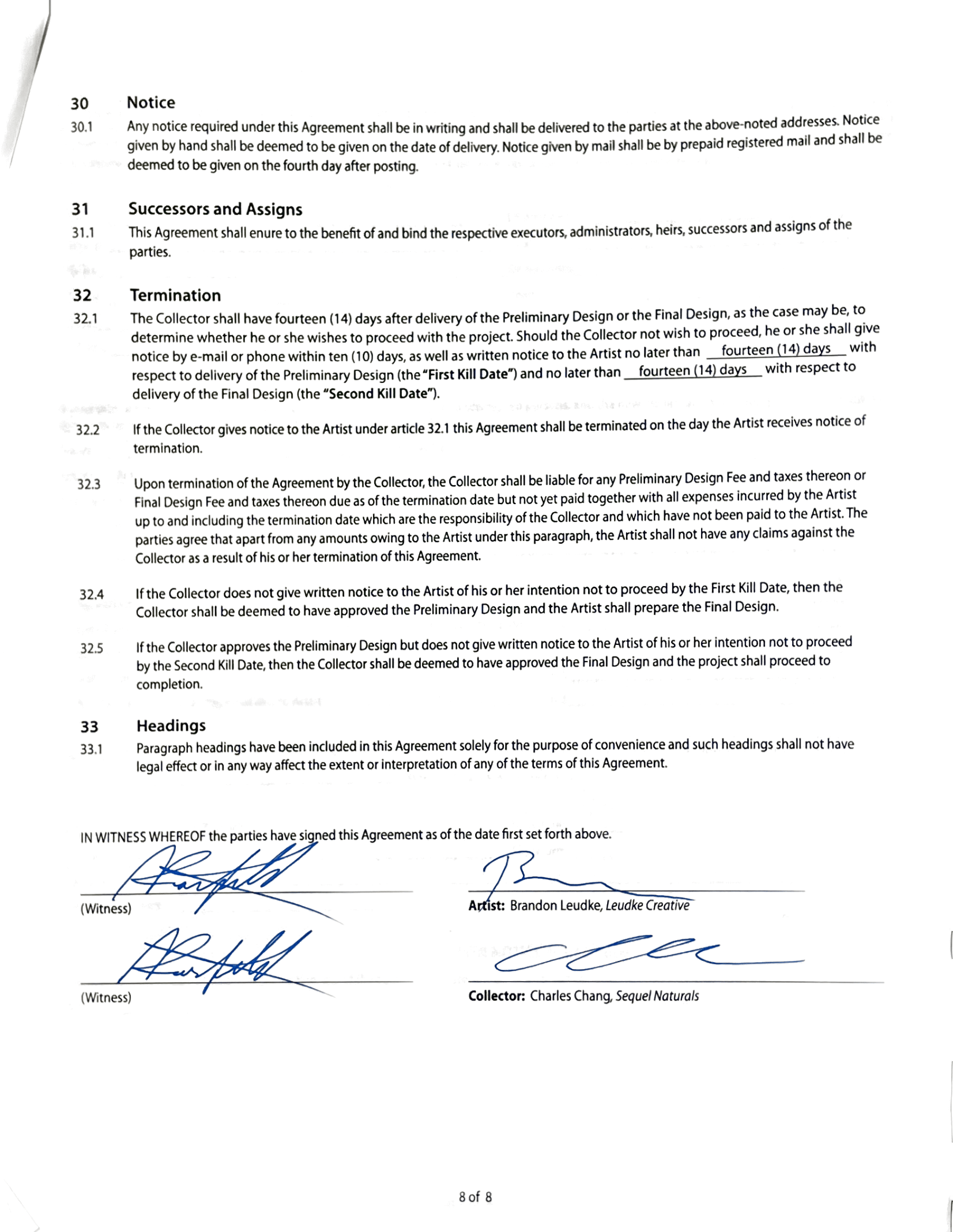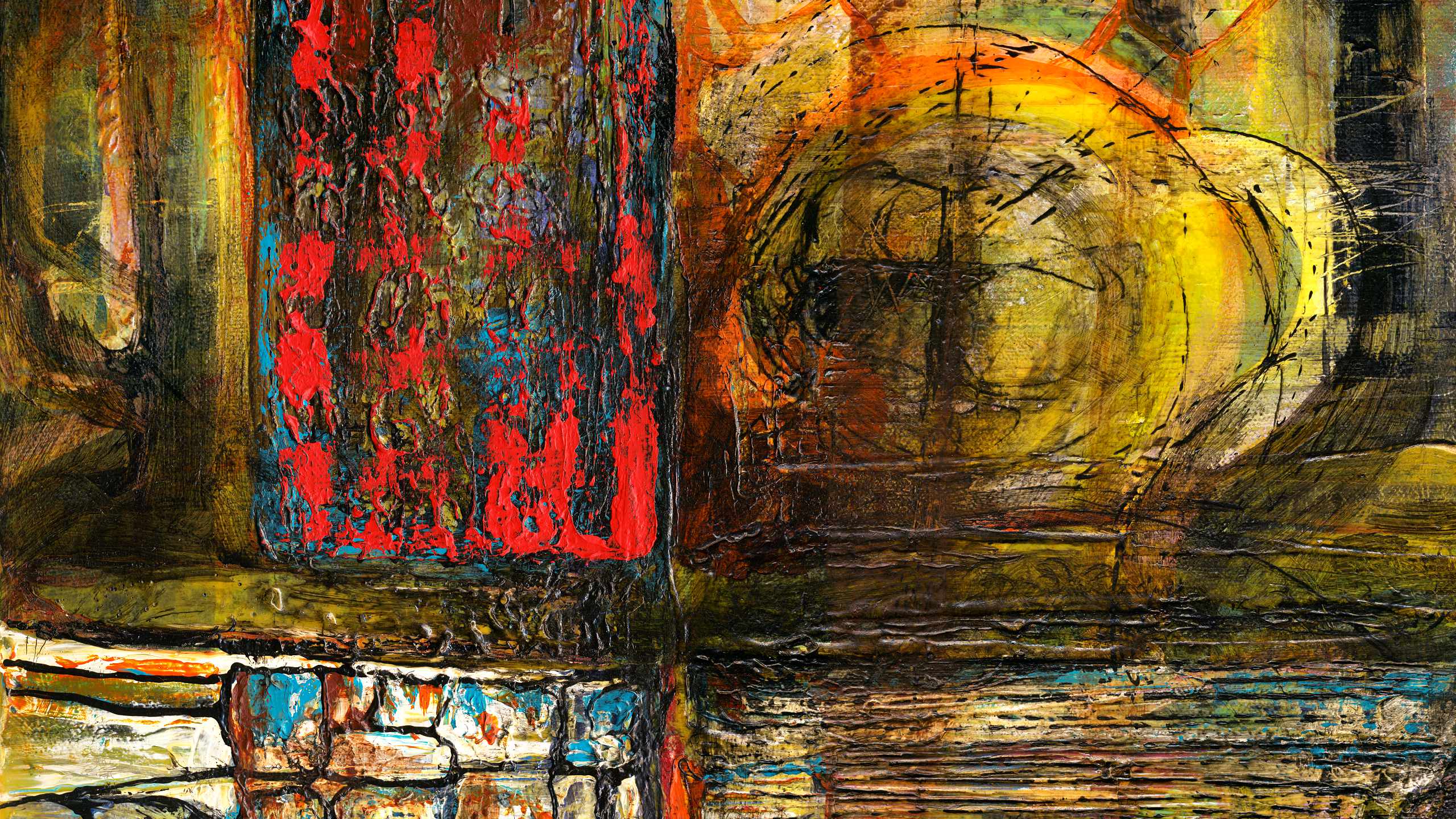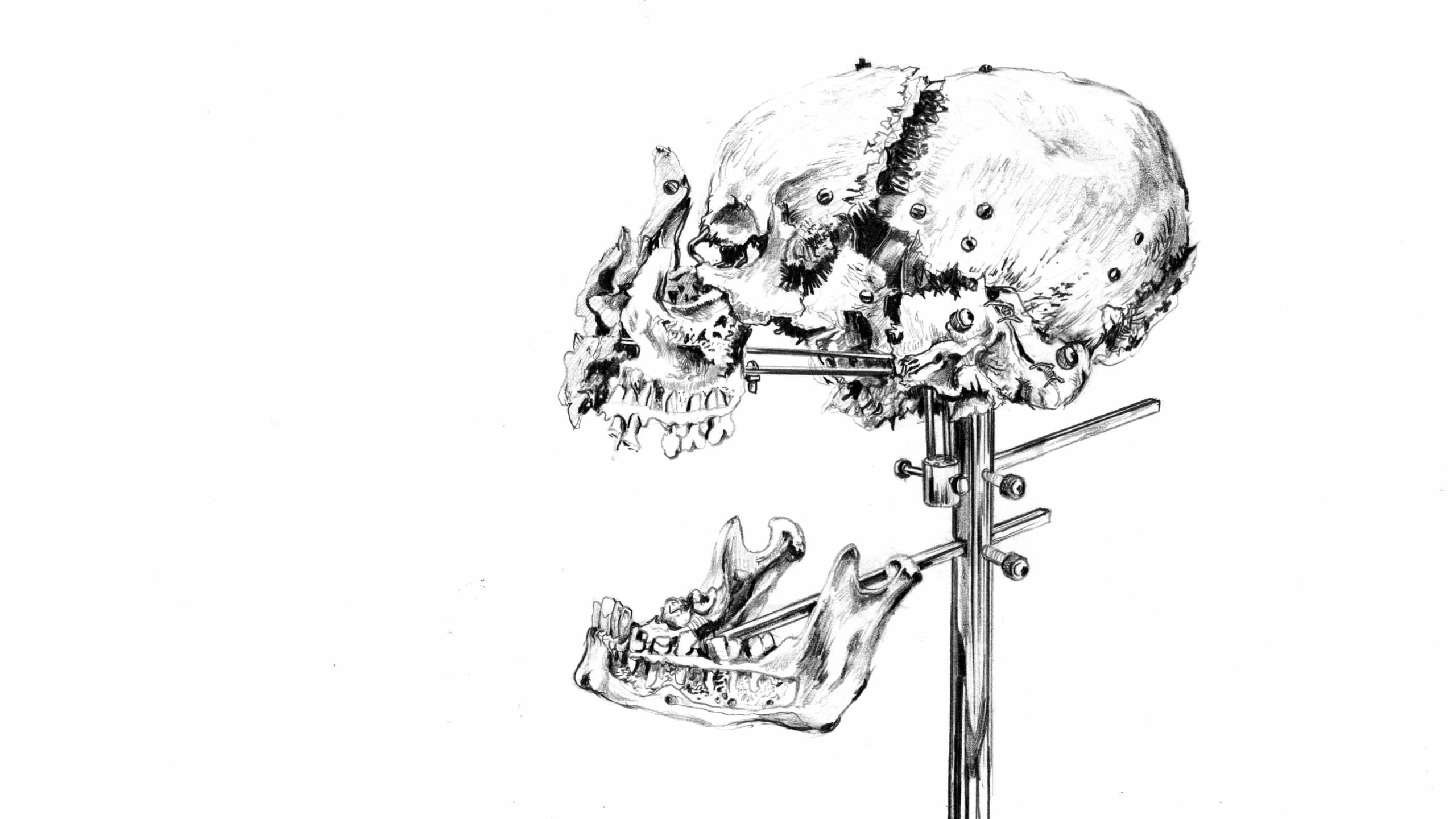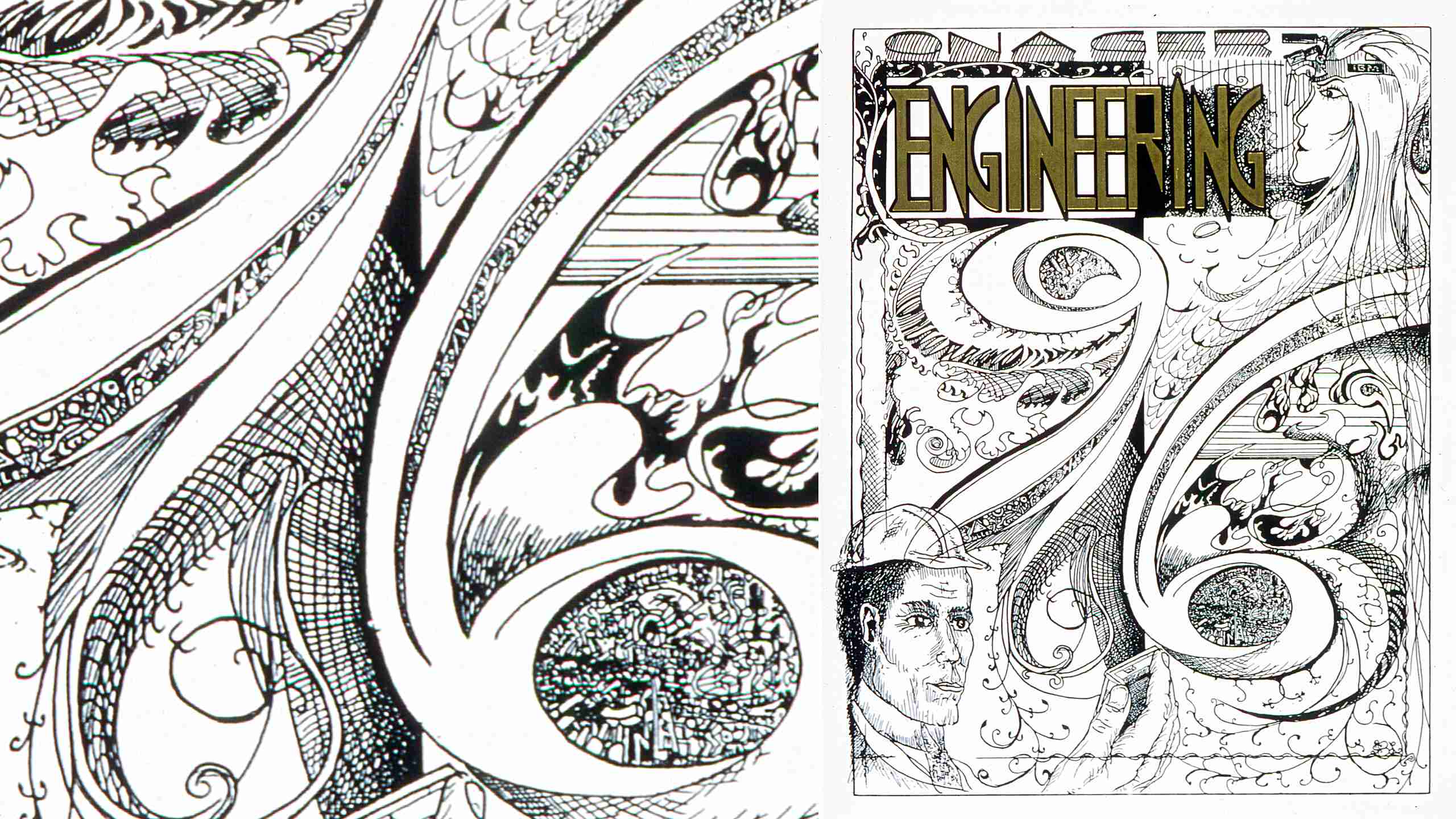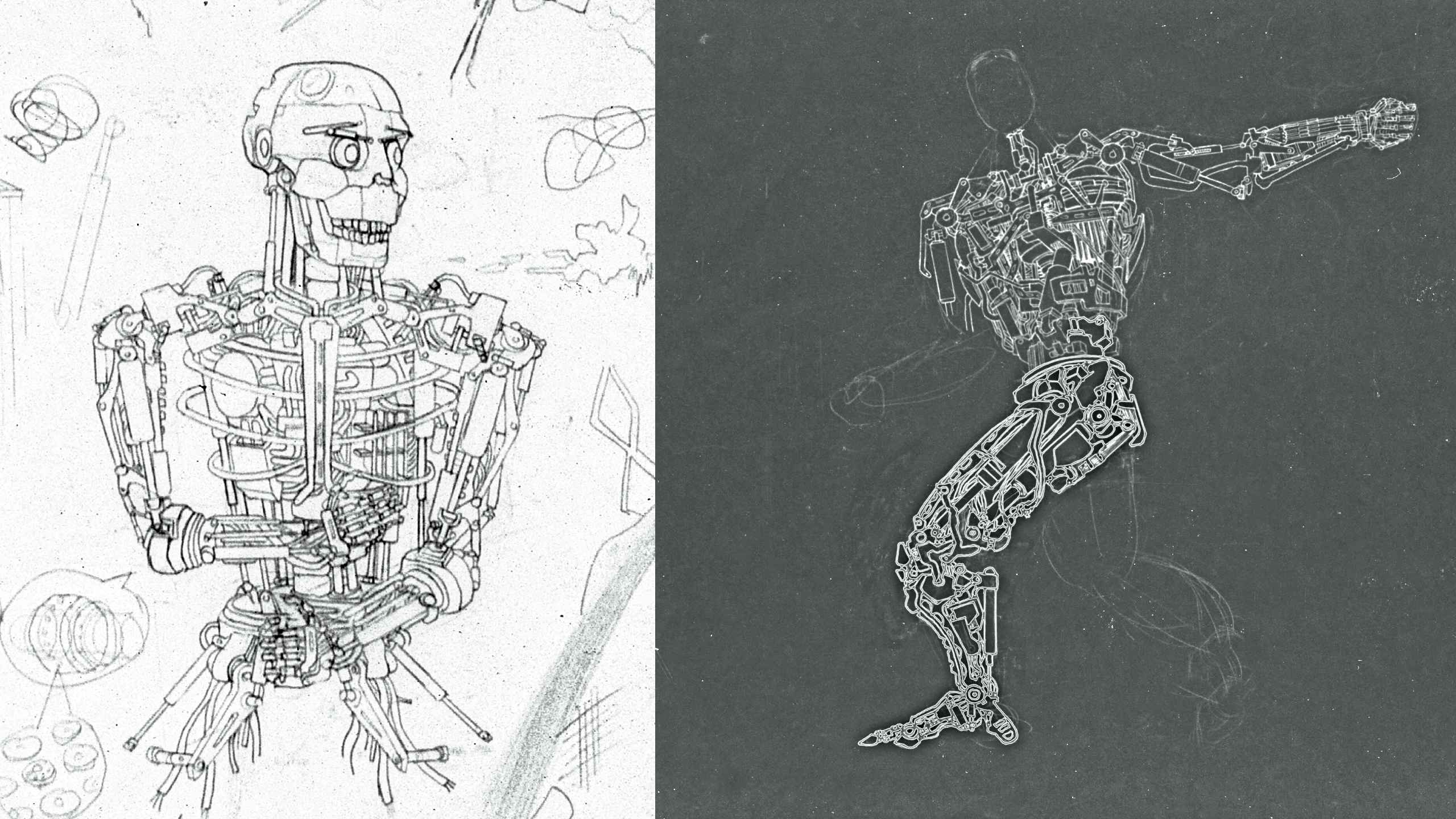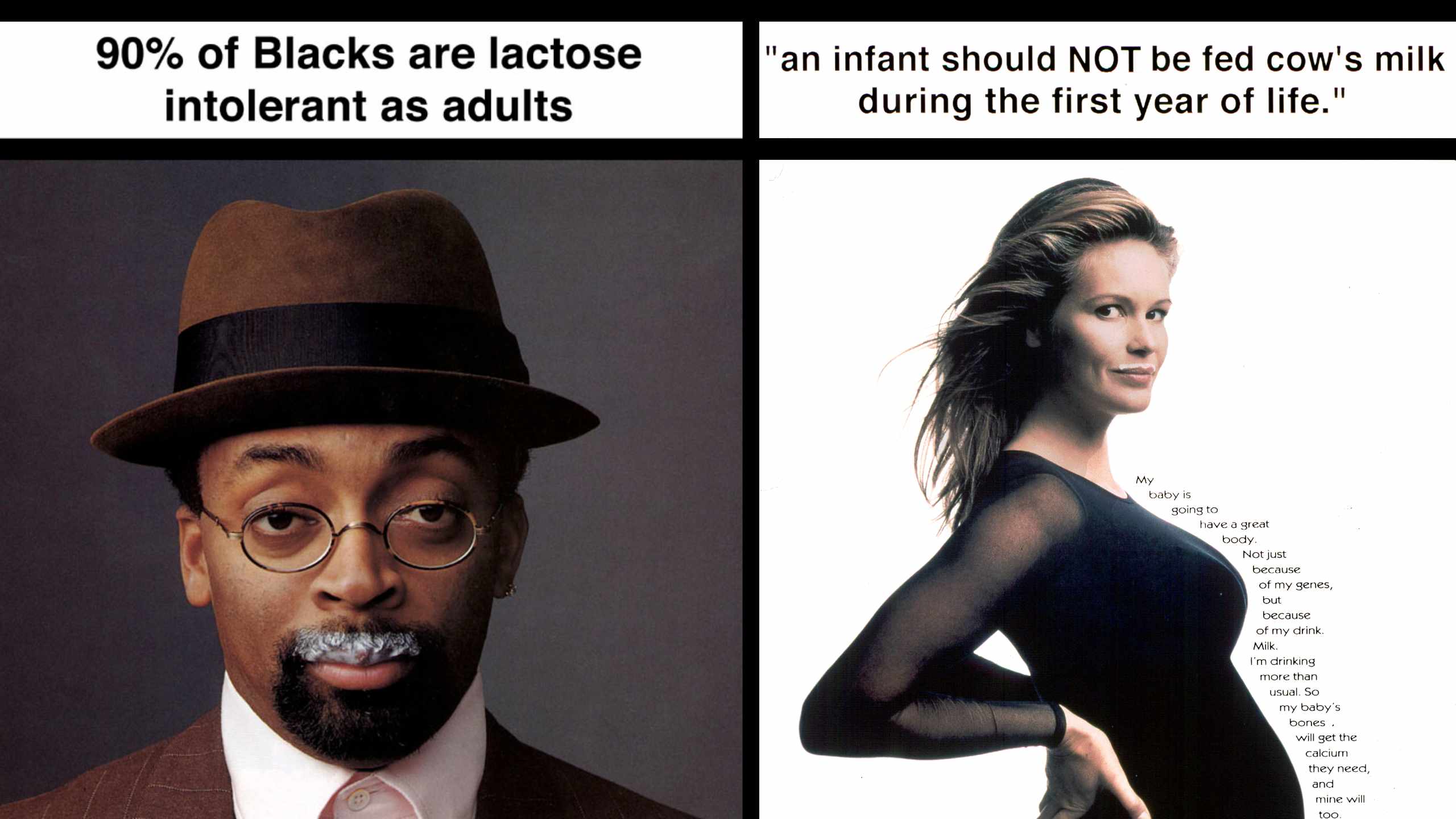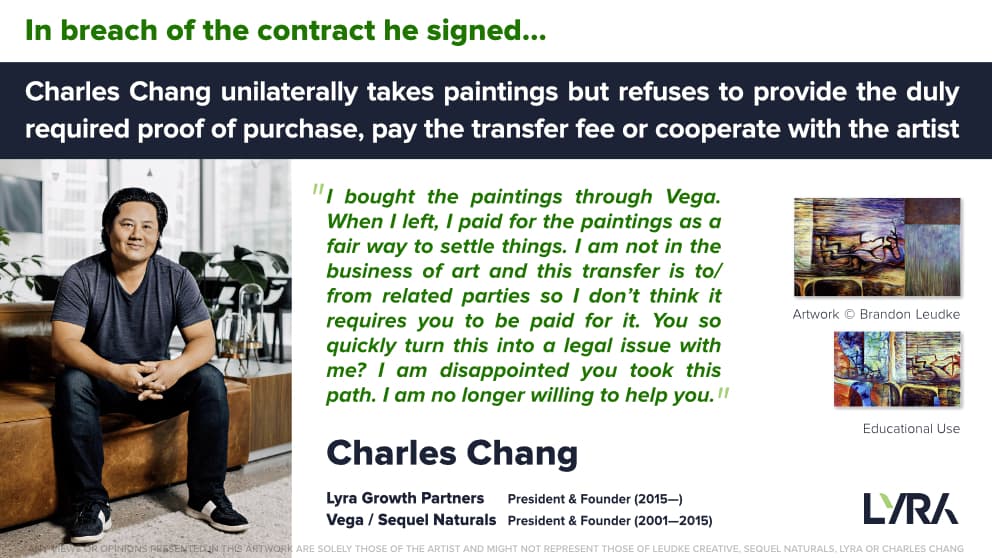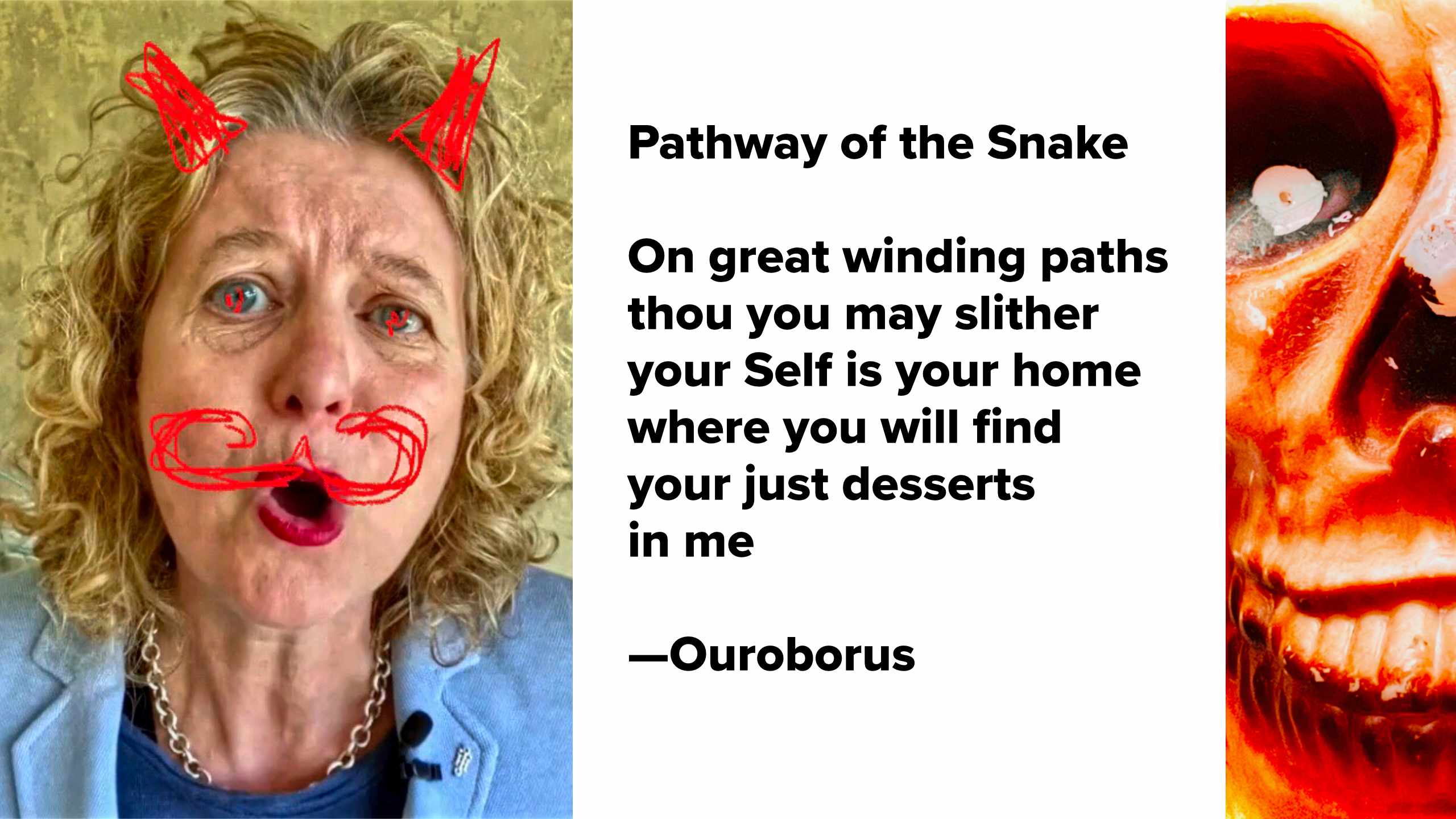 ART
ART
Vega's preternatural motifs resonate in the style of abstract mysticism-symbolism.
The Vega Series consists of Opus, Rising and Horizon, spanning 226 ft2. Originally commissioned to evoke the vivid macroscopic patterns and textures of British Columbia's nature in symbiosis with the energetic cultural aesthetic sought by Sequel Naturals, the Vega Series portrays intricate and sprawling design motifs blended with a bold colour palette that pays homage to the native origins of the organic comestible plants from which Vega's life springs.
From beneath this hybrid layer of marketing artifice glows an illusive inner light, which belies an abstract mysticism-symbolism that begets a depth of purpose and meaning, hitherto only eluded to, which remains to be personally elucidated from someone's personal standpoint or according to their particular nature; in a subjective rather than an objective way.
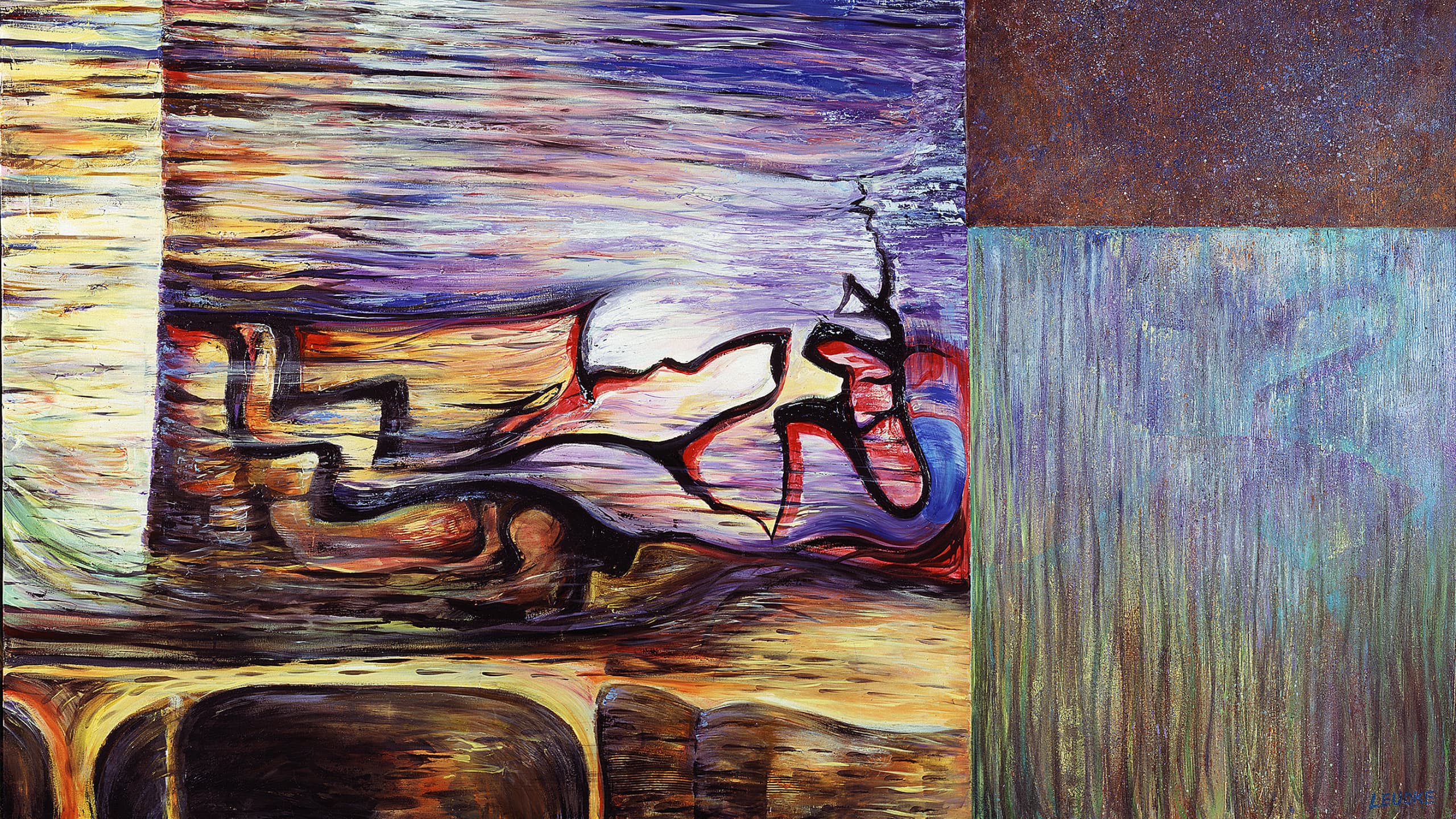
Mysticism and the Visual Arts
Ingrid Falque, FNRS – UCLouvain, Ingrid.falque@uclouvain.be
Elliott D. Wise, Brigham Young University, elliott_wise@byu.edu
Mysticism – or the soul’s ascent towards transcendent unification with the divine – occupies an important, albeit often unstable, position in many religions. In Christianity, mysticism straddles a liminal space, blurring dichotomies of darkness and light, life and death, active and contemplative, clerical authority and revelation. Mysticism is often rooted in personal experience, and textually or visually recording it presents unique challenges. Sometimes, in fact, mysticism shuns pictorial images. At other times, it embraces them as instruments of purgation and illumination, didactic tools and ‘stepping-stones’ to exalted vision. Elaborate iconographies undergird mysticism in Tantric Buddhism, and even within less image-based faiths, such as Islam, Sufi mystics use calligraphic ‘pictures’ of words – or even the abstract beauty of a single letter – to meditate on Quranic truths. In Judaism, too, though generally image-averse, adherents of Kabbalah have tied mystical experience to biblical prototypes such as Ezekiel’s vision of God’s chariot (merkavah).
Given the varying degrees of dependence and hostility between mysticism and images, scholars have employed a range of methodologies to investigate mystical visual culture. Close studies of images alongside mystical texts have proved particularly fruitful. This session invites papers that consider the visual alongside the textual as tools of medieval and early modern mystical discourse. Among other things, topics could address visual exegesis through typology, parables and allegory; Christian images inspired by vernacular spiritual texts; mental images, such as depictions of sefirot in Kabbalah; creation and destruction, as in Tibetan mandalas; materiality; verbal image-making, such as ekphrasis; reformations of the soul; and aniconic vision.
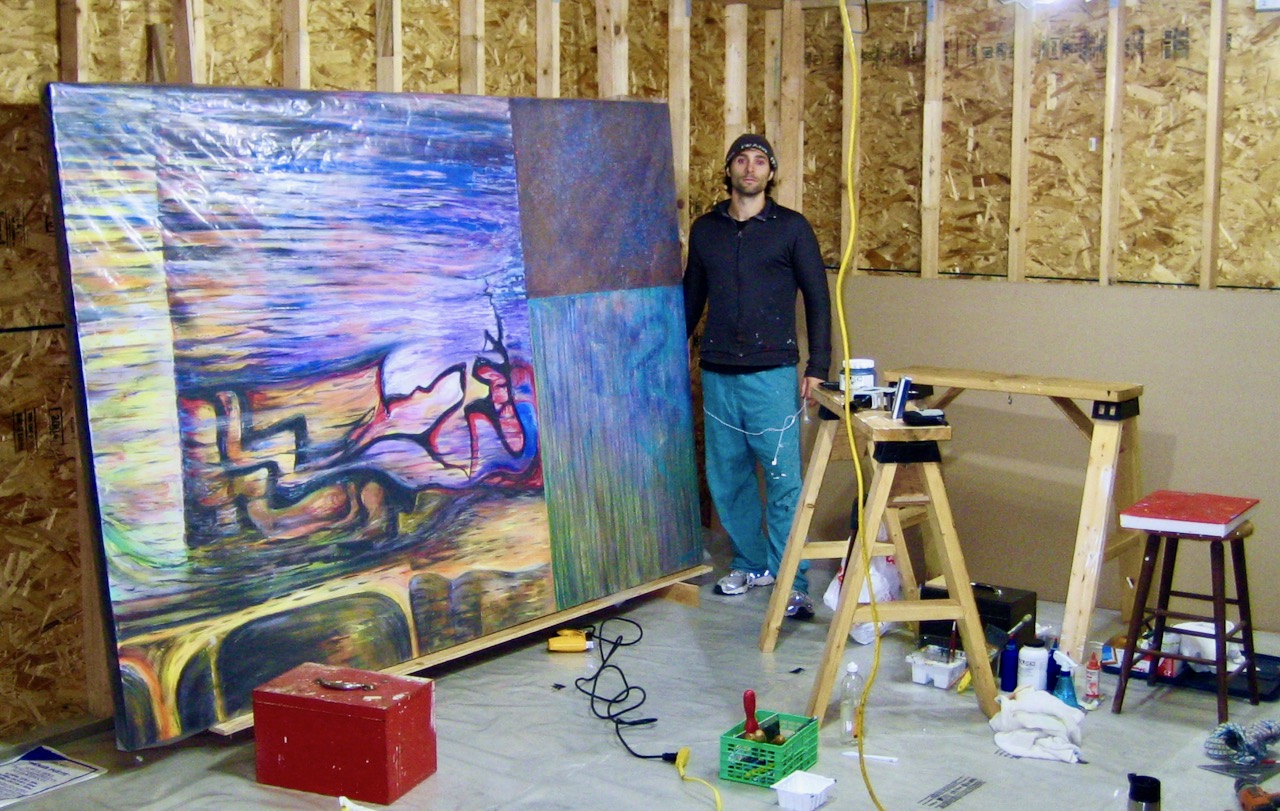
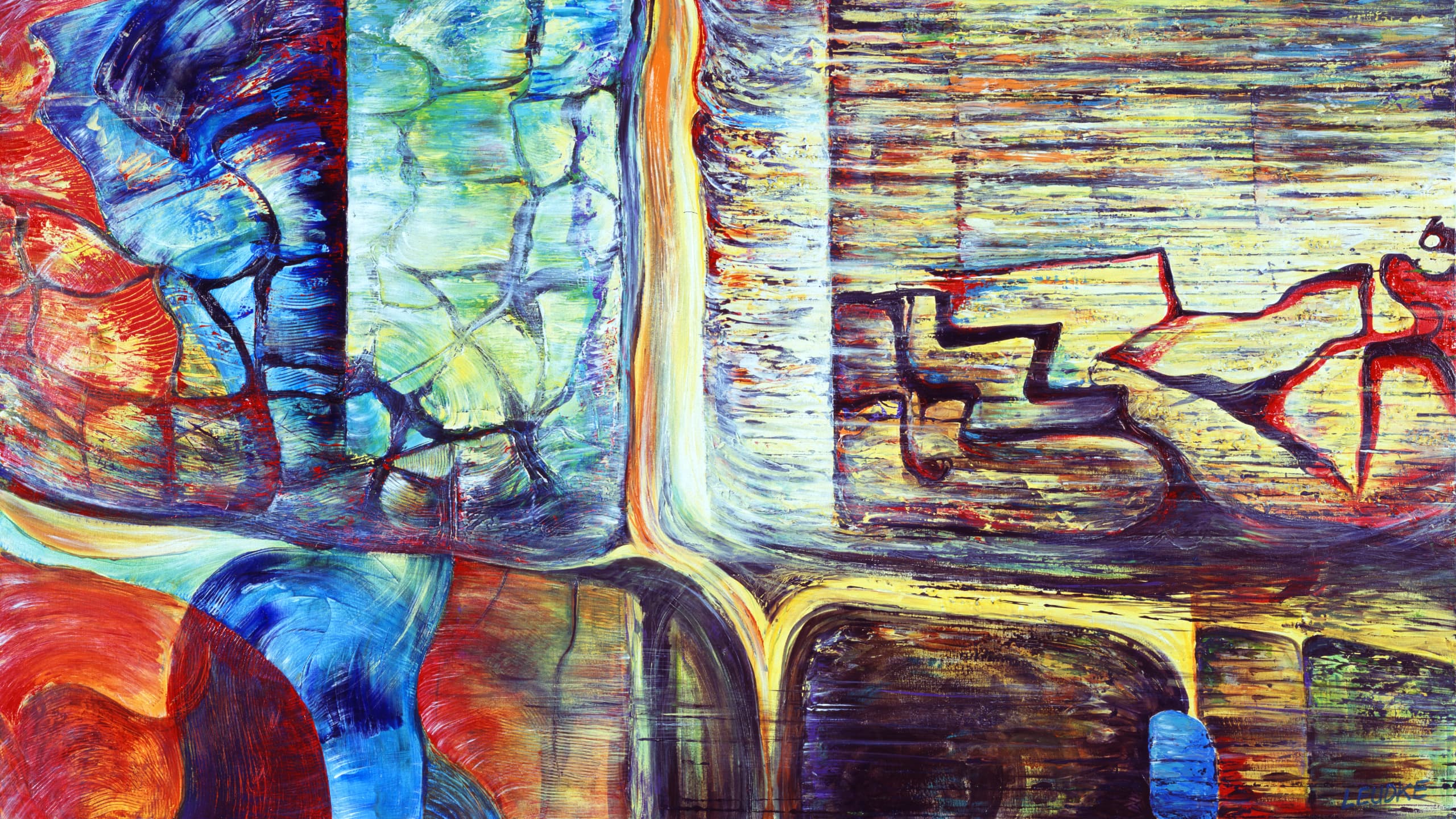
Charles Chang: The Reckoning
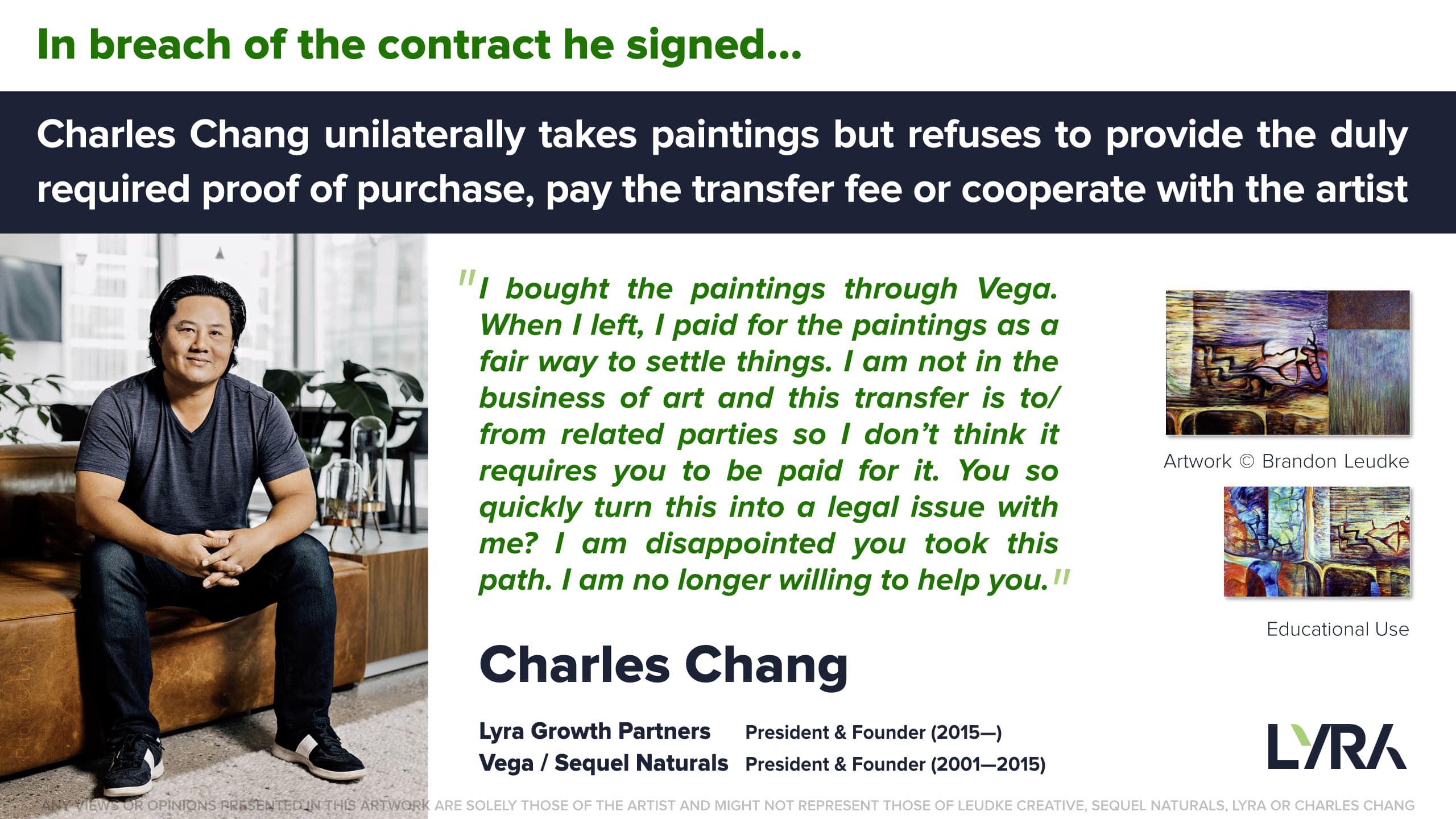 "I bought the paintings through Vega. When I left, I paid for the paintings as a fair way to settle things. I am not in the business of art and this transfer is to from related parties so I don't think it requires you to be paid for it. You so quickly turn this into a legal issue with me? I am disappointed you took this path. I am no longer willing to help you.!"
"I bought the paintings through Vega. When I left, I paid for the paintings as a fair way to settle things. I am not in the business of art and this transfer is to from related parties so I don't think it requires you to be paid for it. You so quickly turn this into a legal issue with me? I am disappointed you took this path. I am no longer willing to help you.!"
Iniquity is The Word of God
Path of Iniquity
Artist's Statement:
In breach of the contract he signed…
Charles Chang unilaterally takes paintings but refuses to provide the duly required proof of purchase, pay the transfer fee or cooperate with the artist.
I bought the paintings through Vega. When I left, I paid for the paintings as a fair way to settle things. I am not in the business of art and this transfer is to/ from related parties so I don't think it requires you to be paid for it. You so quickly turn this into a legal issue with me? I am disappointed you took this path. I am no longer willing to help you.
—Charles Chang
Lyra Growth Partners, President & Founder (2015-)
Vega / Sequel Naturals President & Founder (2001-2015)
LinkedIn: Charles Chang
Our founder Charles is a serial entrepreneur who started Lyra Growth Partners in 2015. He is actively involved in the investment process, working with our investee companies, and supporting our founders.
Prior to Lyra, Charles was founder and President of Vega, which he started from scratch from his basement in 2004. Financed by his life savings, a second mortgage on his house and credit cards, Charles led Vega to become a leading brand of clean, plant–based nutritional products in North America.
Honouring a triple bottom line approach to business and recognizing people are the greatest source of sustainable competitive advantage, Vega and Charles have received many accolades, including: Fastest Growing Companies, Best Workplace, Best Managed Companies and Entrepreneur of the Year. In 2015, Charles led the sale of Vega to White Wave Foods (NYSE: WWAV) for US$550 million.
In 2016, Charles helped establish the Charles Chang Institute for Innovation and Entrepreneurship at Simon Fraser University, an interdisciplinary home and academic hub where people and ideas converge to foster entrepreneurial thinking and action.
Charles is also co-founder of PowerPlay Young Entrepreneurs, a non-profit organization that helps elementary school students develop an entrepreneurial mindset. Using real-world, hands-on learning experiences, PowerPlay helps build confidence and resiliency and develop practical life skills.
Charles lives with his family in West Vancouver, BC and is an active member of Young Presidents Organization (YPO), an avid golfer, fly fisherman, mountain biker, skier and Whistlerite wannabe.
Any views or opinions presented in this artwork are solely those of the artist and might not represent those of Leudke Creative, Sequel Naturals, Lyra or Charles Chang
Private Commission Agreement
Signed by: Brandon Leudke, Artist; and, Charles Chang on behalf of the original owner, Sequel Naturals (Vega)

